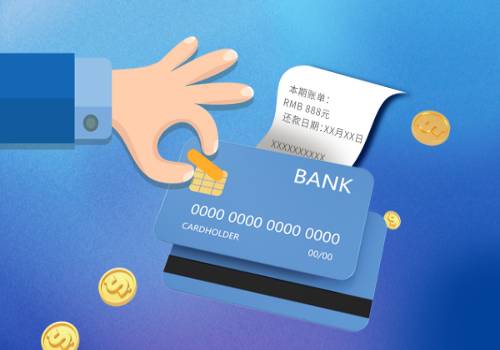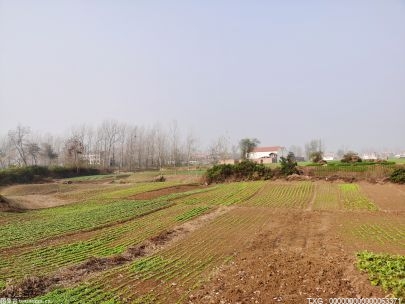Marco Balarezo, Ambassador of Peru to China (Photo by Lu Ningyuan/People's Daily)
In one week, Marco Balarezo, Ambassador of Peru to China, flew from Beijing to Chengdu and then to Xi’an to attend exchange events and exhibition openings – This is part of his daily itinerary in China. After arriving in China in March this year, Balarezo quickly started a fast-paced work mode. “There are many goals I want to achieve during my tenure, and one of them is to open direct flights from China to the Peruvian capital,” Balarezo said in his recent interview with us.
 (资料图片仅供参考)
(资料图片仅供参考)
“China has a high level of modernization”
It is Balarezo’s first time to China as ambassador, but he is no stranger to China. Peru is the country with the largest number of overseas Chinese in South America. Peruvians use the Cantonese word “chifa” to refer to Chinese restaurants and use the Spanish word “paisano” to address Chinese friends. “I have many Chinese friends when I was in Peru,” Balarezo said, “China is a big country and has close relations with Peru. It is the honor of my career and a heavy responsibility to serve as ambassador to China.”
Across the ocean, Balarezo is looking forward to starting a new journey of exploring China. A trip to Chongqing shortly after arriving in China left Balarezo with many beautiful memories. He smiled that authentic Chongqing hot pot was “very delicious, but too spicy.” Not only was the spicy hot pot unforgettable, but also the unique cityscape of Chongqing. The Yangtze River and the Jialing River pass through the city, and the entire city is built layer by layer against the mountains and near the river, which makes Balarezo call it “special.” But what impresses him most is how the people of Chongqing live their lives with relish. “China is doing very well in internal development and wellbeing of the people in general. My first impression is that China has a high level of modernization,” Balarezo said.
Balarezo believes that China’s high-quality development is related to all aspects of economic and social development, and Chinese modernization contains a unique world outlook. China pursues mutual benefit and win-win results in its dealings with the world and China hopes to achieve common development with other countries, especially developing countries. “The Global Development Initiative put forward by China is very important and will contribute to the realization of the UN 2030 Agenda for Sustainable Development,” Balarezo said.
The historic relics of Machu Picchu, Peru. (Photo provided by the Embassy of Peru in China)
“Alpaca dolls are small but there is a big market”
Balarezo is familiar with the story of Peruvian alpaca dolls “becoming famous once shown” at the China International Import Expo (CIIE). You enter any Chinese e-commerce platform, all kinds of cute and amiable alpaca dolls are everywhere – too many for the eyes to see. Balarezo read the comments section of the buyers and happily said: “Chinese consumers love Peruvian alpaca dolls. Alpaca dolls are small but there is a big market. Peruvian quinoa, grapes and other agricultural products are also very popular in China, and Peru is also the largest supplier of avocados to China. ”
More and more Peruvian products have entered Chinese households, thanks to the smooth implementation of the China-Peru Free Trade Agreement, which is the first package FTA signed between China and Latin American countries. Balarezo said that in 2010 the Peru-China FTA officially took effect and trade between Peru and China entered a “zero-tariff era”, with both sides implementing zero tariffs on more than 90% of their products. Since then, Peru-China trade has fully flowed, and China has been Peru’s largest trading partner and main export destination for many years. In 2022, bilateral trade reached 34.6 billion US dollars, and Peru had a trade surplus with China. At present, the two sides are now actively promoting the FTA upgrade negotiations, with comprehensive and in-depth consultations around cross-border services trade, investment, intellectual property rights, e-commerce and other topics. “The Chinese market is very important to Peru, and we hope to take a differentiated route to develop a high-end market with personalized products. For example, although the Chinese textile market is highly competitive, high-quality Peruvian cotton and alpaca products can also find a place. Now many Peruvian entrepreneurs come to China to find business opportunities,” Balarezo said. At the same time, many Chinese companies doing business in Peru not only employ many local workers, but also drive the development of upstream and downstream enterprises, stimulating employment in Peru.
China and Peru have formed a pattern of economic and trade cooperation in which “we are part of each other”. Balarezo is clear-headed about the harm of “decoupling” and “de-risking”. “Decoupling will be risky for everybody. Because we are living in one village, and we are so much interdependent with each other in different sectors. Decoupling is sort of cutting the supply chain and putting obstacles to the regular flows of trade. From the point of view of Peru, we are not in favor of any kind of this movement. We are very open economy. We are very attached to the multilateral trade system. We are trying to be very friendly, very open and very accommodative to all players. All countries are our friends, and we tried to trade with all of them,” said Balarezo. As the host of the 2024 APEC Meeting, Peru looks forward to joining China and other members in raising their voices to uphold the multilateral trading system. Peru is also a member of the Comprehensive and Progressive Trans-Pacific Partnership (CPTPP), and Balarezo applauded China’s application to join the CPTPP. He said that China’s initiative to meet the CPTPP’s high standards is a positive step, sending a signal that the world’s second largest economy will expand openness and support the liberalization and facilitation of trade and investment.
People dressed in traditional costumes take part in a local traditional event in the Peruvian capital, Lima.(Photo by Mariana Basso/Xinhua)
“Latin American countries should become friends with China”
In the blueprint of deepening pragmatic cooperation between China and Peru, the Chancay Port has a special place. The Chancay Port is the first large-scale transport infrastructure project implemented by China in Peru, and is also a landmark project of the Belt and Road Initiative (BRI) in Latin America. Balarezo said that the Chancay Port, located near Lima, Peru, is a large natural deep-water harbor. When completed, it will become an important transport hub and logistics center on the South Pacific coast.
“The current shipping time from China to Peru is 35 to 40 days. After the completion of the Chancay Port, it will be reduced to about 23 days. This will profoundly change the shipping situation from South America to China,” Balarezo said that with the completion of the Chancay Port, the influx of logistics and people will drive employment, promote economic development and possibly the development of industrial parks. Under the framework of the BRI, a number of successful industrial park projects have emerged in recent years. Peru looks forward to the important role that the Chancay Port will play in economic and social development. Balarezo believed that the Chancay Port fully demonstrates the positive impact of BRI on the development of Peru-China relations. It not only promotes policy communication, facilities connectivity, unimpeded trade and financial accommodation, but also promotes people-to-people exchanges. “We are vigorously promoting people-to-people exchanges and cooperation in education, culture, tourism and other areas, and trying to do better. If a Chinese airline opens a direct flight to Lima, that will be a big step to promote the flow of people and hopefully will attract more Chinese tourists to Peru, ” Balarezo said.
In the broad prospect of China-Latin America cooperation, the significance of China-Peru cooperation has become increasingly prominent. “Other countries in Latin America can listen and look at what Peru and China are doing. Peru and China carry out close dialogues, deepen mutual trust and achieve win-win cooperation,” said Balarezo. “The development of Peru-China relations fully demonstrates that the benefits of cooperation with China are clear. Latin American countries should become friends with China. For developing countries, including Latin American countries, deepening cooperation with China can improve people’s lives.”
By Mao Li | Haiwainet
Follow the stories of China with the ambassadors from 27 countries and explore the vast world! Scan the QR code below and order "Talk to Ambassadors (Volume 2)" right away.
责编:何洌、毛莉
标签:

08-30 21:03:42

03-18 14:53:54

03-18 14:51:07

03-18 14:47:48

03-18 14:44:44

03-18 14:40:44

